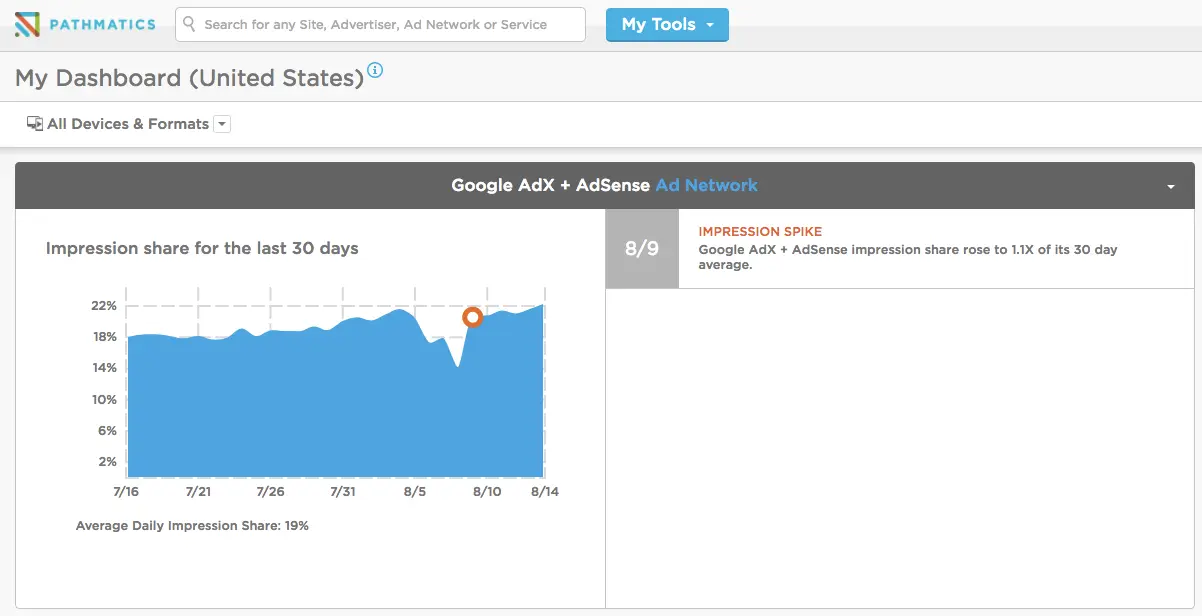Paid ad campaigns present some real challenges to marketers. Allocating budget across channels and creatives is both art and science. With so many moving pieces, paid advertising is quite literally a full-time job. Unfortunately, it doesn’t always produce optimal results. That might be because human beings, on their own, aren’t especially good at paid advertising.
Effective paid advertising requires surfacing insights from lots of data to optimize factors like budget and creative quickly, then iterating on past performance to drive results. Humans aren’t great at this kind of lightning-fast multitasking at high speeds. However, artificial intelligence is.
That’s why AI in advertising is being used by marketers to augment their paid capabilities. When a machine takes the wheel, paid campaigns are able to be optimized consistently in real-time, freeing up human beings to do what they do best: drive strategy and creative.
Why Artificial Intelligence?
Artificial intelligence is the science of making machines smart, to augment and assist human activities. In marketing, AI excels at finding patterns and insights from data—patterns and insights that humans find difficult or impossible to see.
This makes AI perfect for augmenting paid advertising activities. AI systems can inhale data on ad performance and effectiveness, then use that data to adjust campaign specifics accordingly. To do this manually, a human would need to laboriously review past data, then actually adjust campaign parameters like budget allocation by channel. During this process, the results are colored by a marketer’s subjectivity and human error.
Artificial intelligence tools, on the other hand, use algorithms to vastly streamline and improve the paid advertising process.
Artificial Intelligence in Paid Advertising
There are two big areas where AI can improve paid advertising: competitive intelligence and campaign optimization.
An AI-powered tool like Pathmatics uses machine learning to help brands gain actionable insight into how their digital ads perform across channels, where those ads are placed, and how their competitors are advertising. The company’s digital advertising intelligence solutions show advertisers their impressions and spend across desktop, mobile, and video. It also displays competitive intelligence on thousands of major advertisers.
A solution like this can be used to spy on the competition and plan campaigns based on what’s working and what’s not. The sheer volume of data that Pathmatics analyzes would be prohibitively expensive for a human team to analyze. Instead, the tool arms marketers with strategic insights so they can focus on campaign performance.
Campaign optimization is another area where AI shines.
Albert is an AI tool that automatically optimizes paid advertising campaigns. The solution analyzes customer data, then optimizes paid advertising campaigns around conversion goals. Humans provide the creative and machines take the campaign from there.
One business, a Harley-Davidson dealership, used Albert to increase sales leads by nearly 3,000%. Reports Harvard Business Review:
Armed with creative content (headlines and visuals) provided by Harley-Davidson, and key performance targets, Albert began by analyzing existing customer data from Jacobi’s customer relationship management (CRM) system to isolate defining characteristics and behaviors of high-value past customers: those who either had completed a purchase, added an item to an online cart, viewed website content, or were among the top 25% in terms of time spent on the website.
Albert used the dealership’s customer data to then create “lookalike” audiences of prospects with similar characteristics. As sales rose, the dealership’s owner realized the target market for motorcycles, previously estimated at about 2% of New York City, was larger than anticipated.
This is a perfect example of how AI can not only optimize and automate existing activities, but also discover new insights and actions that drive success.
What AI Means for Marketers Running Paid Advertising
Pathmatics and Albert are two examples of AI tools that make marketing teams more productive and performance driven. These tools provide significant benefits to marketers and they point to how marketers’ roles will evolve and change in an AI-powered world.
Neither of these solutions makes human marketers obsolete. But they do require marketers to change. Marketers must learn how to work hand-in-hand with intelligent tools and systems. This requires a solid understanding of what’s possible with artificial intelligence—and where AI systems can be most profitably used to augment activities.
To achieve this requires marketers to educate themselves on AI and experiment with AI solutions wherever possible.
Start with the goals you’d like to achieve or the problems you want to solve. Then, begin researching which solutions might be able to help. AI isn’t a one-size-fits-all technology and not every marketing use case will have an AI solution that makes sense for your business. Below are some resources to start your AI education.
First, read this list of resources to familiarize yourself with basic artificial intelligence:
12 Artificial Intelligence Articles Every Marketer Should Read
Second, see this expert advice on how to get started with AI:
Mike Kaput
As Chief Content Officer, Mike Kaput uses content marketing, marketing strategy, and marketing technology to grow and scale traffic, leads, and revenue for Marketing AI Institute. Mike is the co-author of Marketing Artificial Intelligence: AI, Marketing and the Future of Business (Matt Holt Books, 2022). See Mike's full bio.



